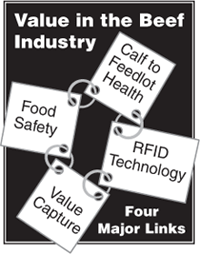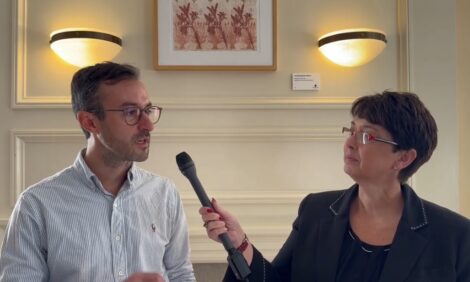



Four Points for Beef Producers to Consider
Four things beef producers might want to think about are food safety, seamless regionalized calf-to-feedlot health connectivity, implementation of improved RFID (radio frequency identification) technology and value capture for the producer, writes Kris Ringwall of North Dakota State University Extension.Realised or not, these four points have a significant impact on the beef industry. Producers want to maximise business options and maintain the flexibility to market their stock by using methods that effectively capture value for the producer and enhance that value to all links in the beef industry.

For instance, as beef producers, food safety is our business. The industry needs to have adequate diagnostic capabilities and first responder teams that have the training, expertise and incident command structure. This includes daily integration of herd health and the application of animal health crisis intervention skills.
The ability to respond is critical to minimise the impact of a threat and requires essential networking by state and federal veterinarians, regional animal diagnostic laboratories and trained first responders with appropriate equipment, supplies and work force to detect, confirm, trace, fight and overcome the impact of harmful pathogens within the food chain.
One could put himself or herself in the cow's shoes. The cow looks and sees two cows drop next her, so she dials 911. Who is going to answer and respond?
A real challenge is the current mobility of beef cattle and the potential exposure. The dynamics of the beef industry today forces us to raise questions about herd health. Not only is maintaining acceptable herd health protocols critical, so is the implementation of programmes that accommodate the flow of cattle from region to region while maintaining the national health of the herd.
The Dickinson Research Extension Center has implemented seamless regionalised calf-to-feedlot connectivity. Calves within a 200-mile radius of the centre can be identified, health-stamped with appropriate data tracking and value captured. Despite industry hesitation, this is the present, not the future. Industrywide acceptance to herd health must include value capture for the producer.
Improved methods that allow for the locating and finding of producer value are essential. New techniques, such as newer RFID technology, can help move the industry from the turtle to the hare. This technology needs to be explored to resolve much of the frustration that exists in the beef industry regarding animal identification and subsequent opportunity to return value to the producer.
This is not a mandatory versus voluntary discussion. Instead, it is a discussion that focuses much of the lost opportunity at capturing value for producers on relatively expensive processes that often times are difficult to verify. Such exercises have plagued the industry response, resulting in a relatively high degree of pessimism about future efforts.
Unfortunately, those in the industry who desire to capture value are stymied as well. The value discussion needs to focus on how producers can come to appreciate more the range in carcass value on the rail. The opportunity is evident in the value spread of carcasses or beef on the rail.
For instance, the current average on the last five lots of DREC cattle estimates the spread in carcass value at $165 from the low 20 per cent to the upper 20 per cent within each lot. That is a lot of money and will impact producers. Finding value is an internal question for producers.
However, the process of removing low-valued cattle in a commodity world that seeks cattle opportunity through 'value-added' still is troubling. Perhaps the discussion could centre on capturing the upper end of value within the carcass. This opportunity pays the producer rather than adding value to low-valued carcasses, which is a value that is seldom returned to the producer.
The bottom line is we need real outcomes from thinking. Thinking creates thoughts that produce discussion. If our discussions reflect sensible means and judgment and sustainable actions that enhance our desire to be good stewards of our resources, we will find solutions that work. In the end, an outcome should be keeping a few more dedicated cow-calf producers on the land they so cherish.
August 2009


